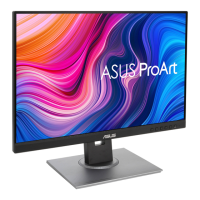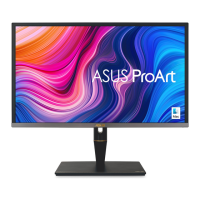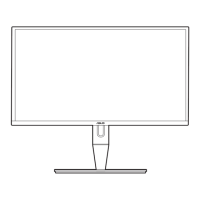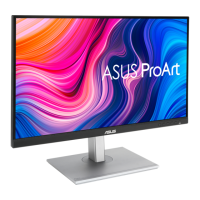
Do you have a question about the Asus PA248QV Series and is the answer not in the manual?
| Color | black |
|---|---|
| Screen Type | led |
| Tiltable | yes |
| Wall Mount | 100mm x 100mm |
| Touch Screen | no |
| Webcam | no |
| OS Compatibility | windows, mac |
| Screen Size | 24.1 inches |
| Panel Type | ips |
| Aspect Ratio | 16:10 |
| Resolution | 1920 x 1200 |
| Native Resolution | 1920 x 1200 |
| Refresh Rate | 61hz |
| Horizontal Viewing Angle | 178 degrees |
| Vertical Viewing Angle | 178 degrees |
| Response Time | 6 milliseconds |
| Brightness | 400 candela per square meter |
| Contrast Ratio | 50, 000:1 |
| Horizontal Scan Rate | 83 kilohertz |
| Built-In Speakers | no |
| VGA Ports | 1 |
| DVI | 1 |
| Power Saving Mode | 1 watts |
| Power Consumption | 75 watts |
| Width with Stand | 22 inches |
| Net Weight without Stand | 14.1 pounds |
Regulatory compliance statement regarding radio frequency interference.
Information on the monitor's energy efficiency compliance with ENERGY STAR standards.
Regulatory compliance statement for digital apparatus in Canada.
Details about the product's third-party sustainability certification according to ISO 14024.
Essential precautions for safe setup, operation, and handling of the monitor to prevent hazards.
Guidelines for proper cleaning and maintenance of the monitor surface and screen.
Explanation of symbols and text conventions used throughout the user manual for clarity.
Information on ASUS recycling and takeback programs for responsible product disposal.
A brief introduction and thank you message for purchasing the ASUS LCD monitor.
Lists all items included in the monitor package for user verification.
Overview of the monitor's physical features and components.
Illustrates and details the front panel buttons and indicators of the monitor.
Identifies and describes the various ports and connectors on the back of the monitor.
Step-by-step instructions for attaching the monitor base and arm.
Procedures for removing the monitor's base for VESA wall mounting.
Guidance on tilting, swiveling, and adjusting the monitor's height for optimal viewing.
Instructions for connecting power, video, and USB cables to the monitor and computer.
Steps to power on the monitor and check the power indicator status.
Explains how to navigate and use the monitor's On-Screen Display menu system.
Detailed steps on navigating and changing settings within the OSD menu.
Introduces various preset modes and functions available through the OSD menu.
Allows adjustment of the blue light filter level to reduce eye strain.
Enables setting desired color configurations and adjustments for image quality.
Covers adjustments for sharpness, aspect ratio, vividness, and contrast.
Options to adjust volume, mute, and select the audio source.
Allows selection of the desired input source (VGA, HDMI, DisplayPort).
Configuration options including Adaptive-Sync, USB Charging, OSD setup, and language.
Provides a list of 21 supported languages for the user interface.
Allows users to define functions for the Shortcut 1 and Shortcut 2 buttons.
Comprehensive list of the monitor's technical specifications and features.
Lists the included accessories and optional cables with the monitor.
Lists various certifications and standards the product complies with.
Provides detailed physical dimensions and adjustment ranges of the monitor.
Common problems and their possible solutions for the monitor.
Details the various resolution and frequency modes supported by the monitor.
Lists supported video timings including pixel format, horizontal, and vertical frequencies.











